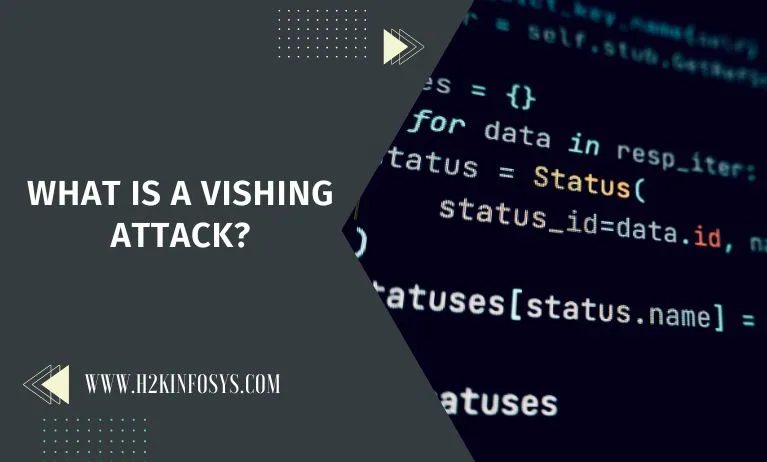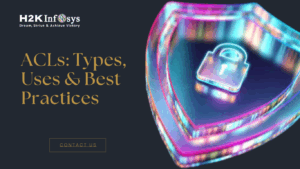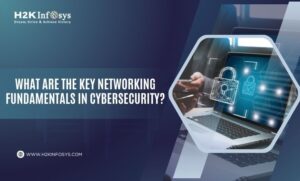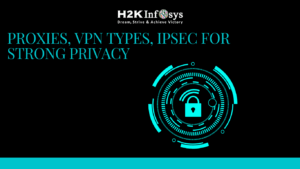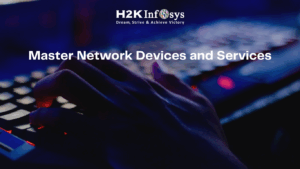Vishing Attack, which combines the words “voice phishing” and “voice attack,” is a form of social engineering assault that is carried out over the phone and uses psychological tricks to convince victims to divulge personal information or take action on the attacker’s behalf. Check out the Cyber security training and job placement program to know more about Vishing.
How does Vishing Work?
The use of authority is one frequent strategy. For instance, the attacker might make a call professing to be from the IRS and to be collecting overdue taxes. Victims may follow an attacker’s instructions because they are afraid of being arrested. Gift cards are frequently used in these attacks, which cost their victims $124 million in the US alone in 2020.
What Is the Difference Between Vishing and Phishing?
Vishing and phishing are both kinds of social engineering assaults that employ many of the same techniques; however, they differ primarily in the media via which they are carried out.

Vishing is an attack method that utilises a phone, as was previously explained. Calling the victim or getting them to call them is how the attacker tries to verbally manipulate them into acting in a certain way. On the other hand, phishers carry out their attacks through text-based, computerised means of communication. While email is the most popular and well-known phishing method, attackers can also launch their attacks through text messages (also known as smishing), business communication tools like Slack and Microsoft Teams, messaging services like Telegram, Signal, and WhatsApp, and social media sites like Facebook and Instagram.
Types of Vishing Scams
As diverse as phishing assaults are vishing attacks. The following are some of the most typical vishing pretexts:
- Account Issue: A fraudster may declare that there is a problem with a customer’s account while posing as a representative of a bank or other service provider. After that, they will request personal data to “verify the customer’s identity.”
- Government Representative: In a vishing attack, an attacker may pose as a representative of the Internal Revenue Service (IRS) or the Social Security Administration (SSA), among other government organisations. Typically, the goal of these attacks is to steal the victim’s personal information or con them into sending money to the attacker.
- Tech support: Social engineers may pose as tech help representatives from well-known and respected organisations like Google or Microsoft. Those assailants will pretend to help to repair an issue on the victim’s computer or browser but actually install malware.
How to Prevent Vishing Attacks
User knowledge is crucial for prevention and security against this social engineering assault as well as other types. The following are some significant topics to cover in cybersecurity awareness training:
- Never Provide Personal Information: Vishing attacks frequently aim to deceive the target into providing personal information that can be exploited for fraud or in other attacks. Never give out a password, MFA code, credit card number, or any other sensitive information over the phone.

- Verify phone numbers at all times: Vishers will make calls while posing as representatives of a trustworthy company. Get the caller’s identity and contact them back using the official number listed on the company website before providing any personal information or acting on the attacker’s advice. If the caller tries to dissuade you from doing so, it’s most likely a scam.
- No-One Wants Gift Cards: Vishers frequently demand payment in the form of gift cards or prepaid Visa cards for unpaid taxes or other fees. No trustworthy businesses will ask you to pay with a gift card or prepaid credit.
- Never grant remote computer access: Vishers may ask to access your computer remotely in order to “remove malware” or address other problems. Never provide anyone other than confirmed IT staff personnel access to your computer.
- Report Suspected Incidents: Vishers frequently attempt to con several targets with the same scam. Inform IT or the authorities of any suspected vishing attack so that they can take precautions to safeguard others.
Training-based vishing prevention is ineffective, just like phishing attacks. There is always a chance that an attack will get through. Vishing, in contrast to phishing, is challenging to stop technologically. Vishing happens over the phone, therefore monitoring all calls for possible assaults would necessitate listening in on all conversations.
Because of this, businesses should develop defence in-depth strategies and concentrate on the goals of the attacker in order to combat vishing attacks. In a professional setting, a vishing attack might be intended to access confidential company information or to install malware on an employee’s computer. Even if the initial attack vector (i.e., phishing) is used, the impact of a vishing attack can be reduced by putting measures in place that prevent an attacker from attaining these aims (i.e. the vishing phone call) is undetectable.
Conclusion
It is advisable for you to learn Cyber security online. This will give you the opportunity to understand how Vishing works and how you can prevent them in your business or organisation.
